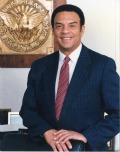by Brenda Tindal, Graduate Processing Assistant, Auburn Avenue Research Library and MARBL Woodruff Fellow
 “Working for Freedom: Documenting Civil Rights Organizations” is a collaborative project between Emory University’s Manuscript, Archives and Rare Book Library, The Auburn Avenue Research Library on African American Culture and History, The Amistad Research Center at Tulane University, and The Robert W. Woodruff Library of Atlanta University Center to uncover and make available previously hidden collections documenting the Civil Rights Movement in Atlanta and New Orleans. The project is administered by the Council on Library and Information Resources with funds from the Andrew W. Mellon Foundation. Each organization regularly contributes blog posts about their progress.
“Working for Freedom: Documenting Civil Rights Organizations” is a collaborative project between Emory University’s Manuscript, Archives and Rare Book Library, The Auburn Avenue Research Library on African American Culture and History, The Amistad Research Center at Tulane University, and The Robert W. Woodruff Library of Atlanta University Center to uncover and make available previously hidden collections documenting the Civil Rights Movement in Atlanta and New Orleans. The project is administered by the Council on Library and Information Resources with funds from the Andrew W. Mellon Foundation. Each organization regularly contributes blog posts about their progress.
For more information about the collection described in this post, please contact the Archives at Auburn Avenue Research Library, aarl [dot] archives [at] fultoncountyga [dot] gov
If the old adage “a picture is worth a thousand words” were of literal value, then, Andrew Young’s photograph collection far exceeds the American lexicon. Indeed, the Andrew J. Young, Jr. Papers at the Auburn Avenue Research Library on African American History and Culture consists of thousands of photographs. This generous catalog of images captures the tender moments he shared with his family and friends, and it traces his illustrious career as clergyman, civil and human rights advocate, congressman, UN ambassador, Mayor of Atlanta, gubernatorial candidate, and businessman. While the task of processing a series of such breadth was a challenge, it was, nonetheless “an easy burden.”
| Above: The Young Family at the Poor People’s Campaign, 1968. Click to enlarge. | Above: Young and President Jimmy Carter in the Oval Office, late 1970s. Click to enlarge. |
Invoking the title of Young’s 1996 autobiography to describe the work involved in cataloging his photographs seems fitting for a variety of reasons. Most notably, the immense effort required to organize such a vast photographic record seems minimal when you consider the meaning this collection will have in understanding Young’s personal and public life. To frame Young as simply the trusted confidant of Dr. Martin Luther King, Jr. or as the visionary responsible for bringing the Olympics to Atlanta, in my view, is woefully short sighted. Thankfully, this collection makes it impossible to imagine him within those limited terms. Instead, the photographs invite you to envision a man who was sincerely engaged with the global experiment in democracy; amazingly humorous; often shared the public sphere with his family; a dignitary traveling the world over; an ordained minister officiating wedding ceremonies; an activist working earnestly to eradicate prejudice and privation; and above all, a human being, who like everyone else, contends with the universal events of life.
For the sake of posterity, Young has vouchsafed researchers an incredible body of photographs which are certain to transform how we not only imagine his place in the annals of American history and culture, but also how we see ourselves.
